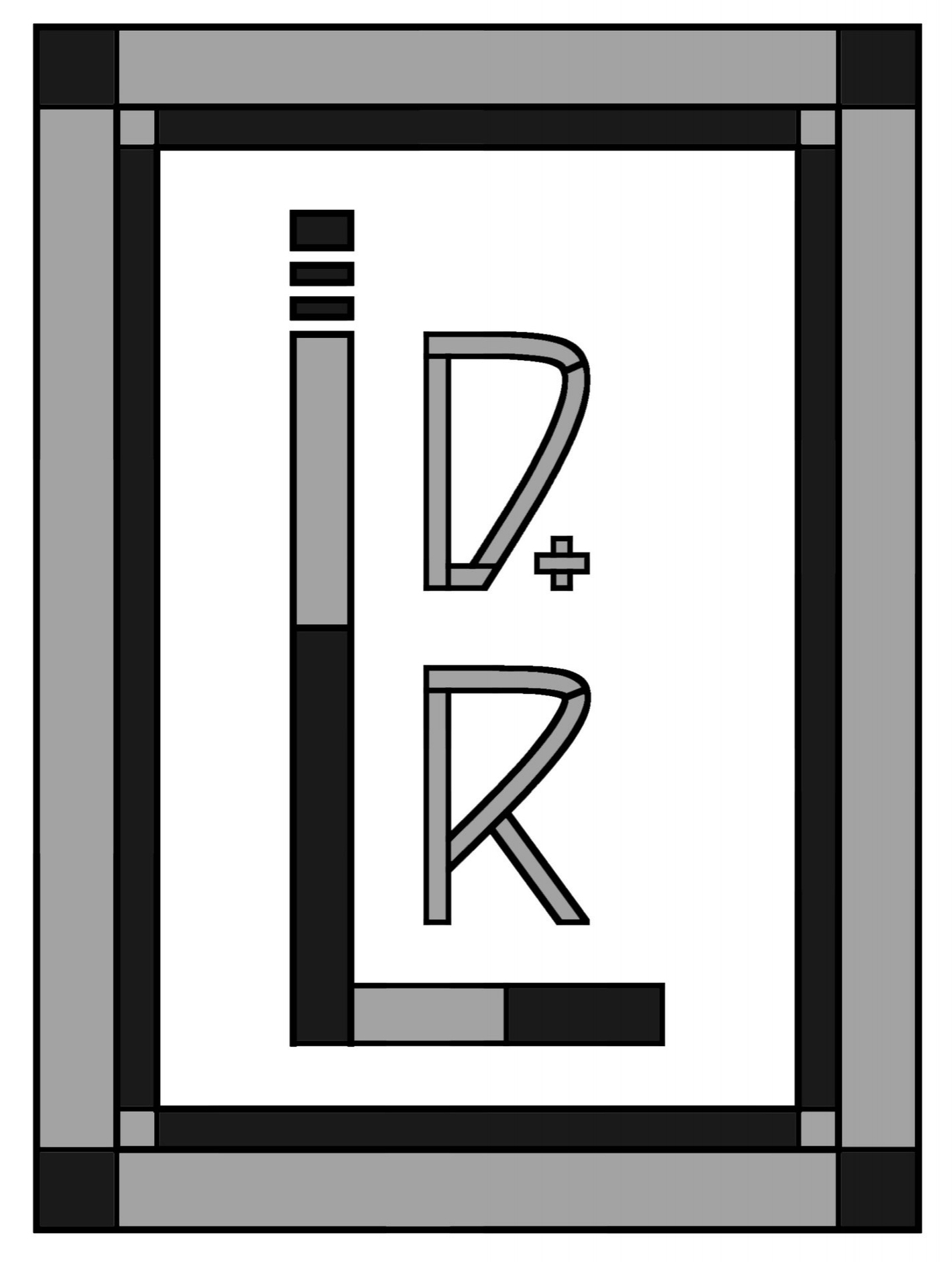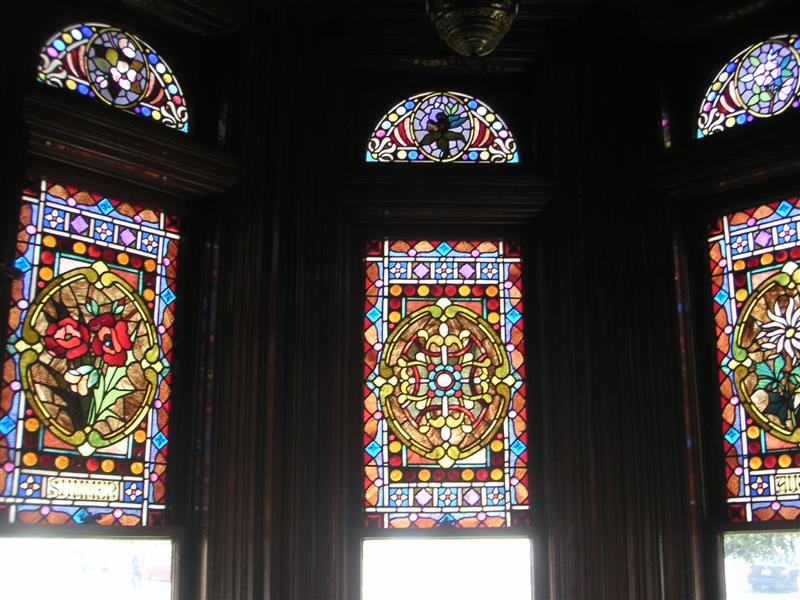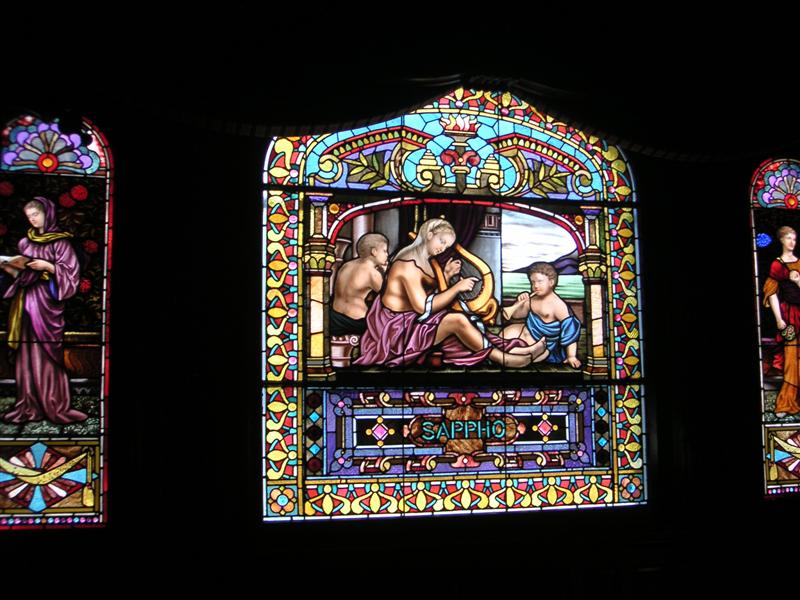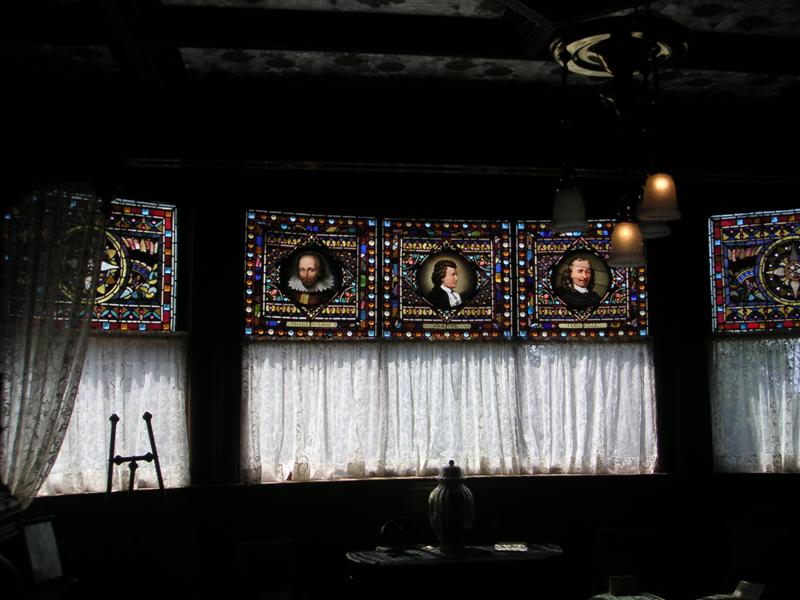The encouragement he met with in his efforts to introduce decoration on glass was at first very small indeed. The people had little taste for art, and little thought or desire for decoration of any kind. Under these circumstances Mr. Mallon set himself systematically to work to create the taste he found was lacking, to educate the public up to an appreciation of the beautiful and the artistic. He made up many samples of windows and other artistic work, and placed them all over town in situations where they could not but attract the attention of the public. (Morrison)
1869: Moved to 19 Fremont Street near Market Street, San Francisco, California
1869: Added embossing and staining capabilities and expanded to 222 and 224 Howard Street, San Francisco, California
1874: St. Peter's Episcopal Church commission, Carson City, Nevada
1879: Exhibited at the San Francisco Mechanics' Institute's Fourteenth Industrial Exhibition (you can see a stereograph of Mallon's booth in this interesting article on the history of these important exhibitions). The first took place in 1857 and once Mallon arrived in San Francisco it's likely he held a booth at nearly every subsequent fair. The following excerpt is from a report of the nineteenth exhibition that took place in 1885:
John Mallon Stained Embossed Etched Cut and Bent Glass...fairly rivaled the Music Stand and Art Gallery in its attraction of visitors the liberal allowance of space for the exhibit being almost constantly thronged by architects and persons of cultivated tastes. Each succeeding year's exhibit of the Mechanics Institute has shown a decided advance by Mr. Mallon in his important specialty and a corresponding growth in public interest for his department. The success he has achieved under the stimulus of business enterprise and correct art taste awakens no sentiment in the heart of California lower than that of pride in the "Workman and his Work". (Mechanics' Institute)
The report describes works such as "Angel of the Resurrection", "Marguerite" and "Falconer and Dog" - companion pictures that "are beautiful examples of what may be achieved by the artistic use of jewel glass," and "Transom of Glass Effects” - an eclectic arrangement of opalescent glass, jewels, cracked dishes, roundels, and antique glass.
1881: Residential commission, San Francisco, California (featured in this video)
1886: St. Peter's Catholic Church commission, San Francisco, California
1887: Villa Montezuma commission, San Diego, California (we shared a few pictures of this installation here)
1888: Presbyterian Church commission, San Diego, California
In 1888 mention was made of the "Mechanic’s Fair, where one of the most attractive displays is the exhibition of stained glass. John Mallon, designer at the Pacific Glass-Cutting Works (19 Fremont Street, San Francisco) displays a Memorial Window designed for the Presbyterian Church of San Diego, an especially handsome production." (Henderson)
The story is that the church was built at "8th and D Streets"* adjacent to the original building on land donated by Alonzo Horton. The building and furnishings cost $36,000 (nearly $1MM in 2018 dollars) and soon after the congregation nearly went into default due to San Diego's bust of the 1880's.
Additionally, in 1888 Mallon's son Peter L. was interviewed by George Morrison for the The Works of Hubert Howe Bancroft (or Bancroft’s Works). Much of the notes from this interview are now being utilized for our research.
*What may be currently 8th Avenue and Broadway
1889: Dominican Sisters' Motherhouse commission, San Rafael, California
1889: Hall of Justice commission, San Diego, California

![The motherhouse stood for just over 100 years before it was heavily damaged by fire.Title: Dominican Convent, San Rafael, California, circa 1908 [postcard]Date: circa 1908Collection: General CollectionOwning Institution: Marin County Free LibrarySou…](https://images.squarespace-cdn.com/content/v1/5955c00c2cba5e1a1df2b943/1532816231158-2E6SDDKTMETFGRBP3ZVC/general_11_large.jpg)









